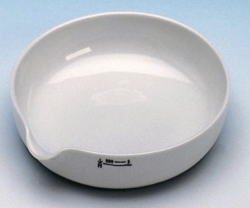Promotion
Promotion
A photometer
A photometer for photometric analysis includes a light source, a filter, a sample cuvette, and a detector. Additionally, the device contains apertures and mirrors. The light from the source passes through the filter, which determines the wavelength for measurement. The light then passes through the sample solution in the cuvette to the detector. The lower the amount of light detected, the higher the concentration of the sample must be.
These devices vary in construction and include different optical components, influencing measurement quality and application.
Photometers can analyze water. The NANOCOLOR photometers from MACHEREY‑NAGEL find use in various areas. They are employed for testing wastewater, drinking water, process water, surface water, groundwater, and cooling and boiler feed water. Moreover, they are utilized in the food and beverage industry. One device can perform all these tests. NANOCOLOR photometers are also suitable for specific applications such as color measurements.
The BOD (Biochemical Oxygen Demand)
In BOD5 measurement, the oxygen content in diluted wastewater is measured before and after incubation. During BOD self-control measurement using a closed respirometer, measurable pressure changes occur due to the resulting carbon dioxide. Samples must be stored for five days at 20 °C. OxiTop®-IDS systems enable biodegradability tests, for example, soil investigations or tests for new chemical substances. Modern spectral probes can also determine BOD values. This involves spectral correlation and user calibration based on known BOD laboratory values to calculate a BOD value.
The Kjeldahl method is an important technique for determining nitrogen and proteins. Developed by Johan Kjeldahl in 1883, it revolutionized nitrogen analysis. The method is used in various fields including food, feed, soil, and water analysis. It is crucial in general and pharmaceutical industries and wherever nitrogen content is significant.
The Kjeldahl analysis is highly precise and straightforward, remaining a reference method today. It can capture all nitrogen components, allowing for the determination of individual nitrogen components such as ammonium, nitrate, nitrite, and organically bound nitrogen from different samples.
The Kjeldahl method is advantageous for analyzing large quantities.
The classic application involves using manual laboratory heaters and Erlenmeyer flasks. Today, there are many different devices for this purpose. Initially, they were large cast iron frames. Now, they are highly precise instruments capable of sample digestion and distillation. Results can be calculated, and samples can be automatically introduced.
The Kjeldahl analysis essentially consists of three steps: digestion, distillation, and titration.
Samples are digested with sulfuric acid. The solution is then distilled. Finally, the distillate is titrated, and the result is calculated. The chemistry has changed little, but the process is now fully automated and adapted to modern laboratories. Users benefit from digestion blocks and steam distillation systems with integrated titration.
Laboratory personnel are safer due to improved equipment safety and reduced operating time. More samples can be analyzed in less time.
The advantage is the ability to examine various matrices, including grains, feed, dairy products, or other foods. It is also suitable for testing manure, sewage sludge, compost, soils, aqueous extracts, and wastewater, particularly in highly heterogeneous sample materials where Kjeldahl has few alternatives.
Extraction methods separate soluble components from solid samples.
Determining fat content in foods.
Detecting contaminants in soil samples.
Analyzing natural substances for their constituents.
Even brewing coffee is an extraction process. In the laboratory, desired components must be fully extracted from the sample under defined conditions and not too diluted. Organic solvents like hexane or petroleum benzene are commonly used as extraction agents. Unlike coffee makers, the solvent is repeatedly passed through the sample. The extracted portion accumulates in the distillation flask.
Interested in examining fat in foods? Hydrolysis followed by Soxhlet extraction, e.g., fat determination according to Weibull-Stoldt or AOAC International Hydrolysis Method.
Want to know what's in packaging or objects? Hot extraction for determining plasticizers in packaging according to Randall. Soxhlet extraction of organic compounds from plant tissues.
Determining fat content in foods and feeds? Hot extraction according to Randall. For some samples, hydrolysis before extraction to determine total fat content.
Interested in pesticide presence in foods and feeds? Residues and contaminants are extracted from foods, feeds, or other materials. No reactions with oxygen are triggered. Increasing sample size can raise detection limits.
Manufacturers such as Behr, Gerhardt, A. Krüss, Büchi
 Quick delivery
Quick delivery





















